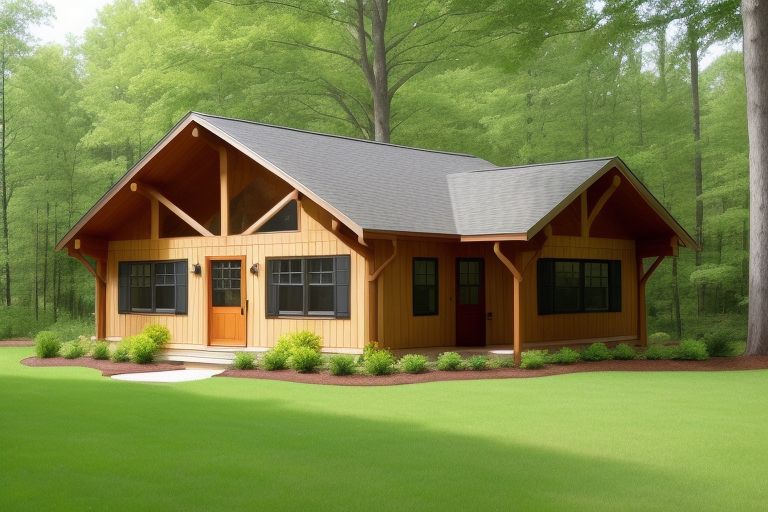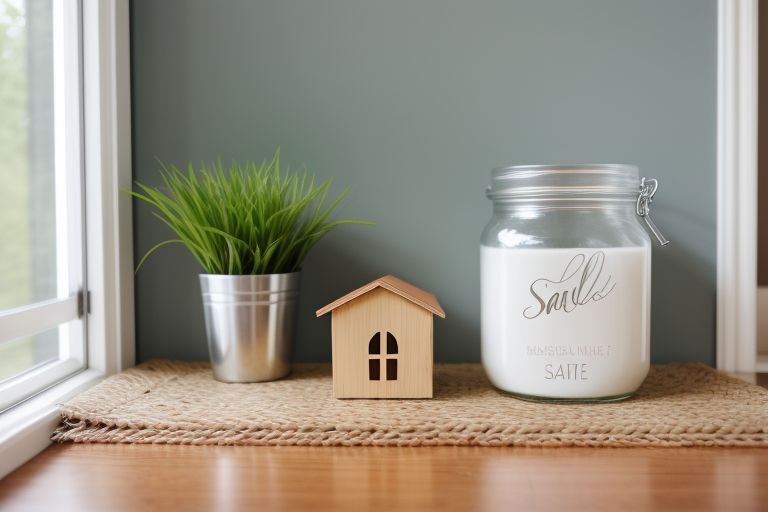Purchasing your very first home is a monumental occasion, but it can also seem daunting especially when you need to save up for a downpayment. Have your eyes set on a small, cozy starter home — or is it the big property you’ve got in mind? Below you will find a guide to help you save for your first home, providing useful hints that make reaching your goal more quickly and easily.
Why saving for that first home is so important

There is more to saving for a home than stashing cash away for your down payment. At the end of the day it is putting yourself in a position with your finances so that you are guaranteed to be successful on the journey to home ownership. The earlier you start with these sound financial habits, the smoother your path to homeownership will be—and the better position you are in for long-term wealth-building. Why Saving Diligently is Critical
- Lower Mortgage Payments: By making a bigger down payment, your monthly mortgage payments are significantly lowered which saves you money over the course of the loan.
- Better Interest Rates: Lenders provide better interest rates to buyers giving higher down payments, cutting even more costs down the road.
- Savings: A solid savings reserve guarantees that you are ready for any unforeseen costs associated with the big investment.
Set a Clear Savings Goal

Would you believe a lofty goal is the very first step in any savings plan? Additionally, if you do not know exactly what for nor how much you need, it becomes easy to just give up or overspend elsewhere because why not? How to set a net savings goal for your first home
Calculate the Total Cost
The first step is to determine your down payment requirement. Borrowers can usually expect to put down between 5% and 20% of the full value of the home. As well, don’t forget about closing costs that can add another 2%-5% on top of home price. Sum these numbers to get an idea of the total amount you will need to save.
Break Down Monthly Savings Targets
What you have to do next is find out how much you have to save and start breaking that number down into bite-sized goals each month. This will allow you to compare your performance over time and manage your focus. To save $20,000 in two years (24 months), you need to be saving around $833 a month.
Build in a Buffer
You should always have a little buffer when you are saving for a house to account for expected moving expenses. Home inspections This ranges from $200-$500 With the moving costs Emergency repairs once you have already moved into the home This way you are more prepared for any surprise that might come your way later.
Automate Your Savings
Automate to save one of the most intelligent ways to start saving for your first home This means that you will always be putting money away, whenever you remember and more importantly before the temptation arises to spend it.
Establish Automatic Transfers
Find out how much you can spend with your bank on autopilot so that every time some money enters the checking account, it flies into a predefined home savings account. The result will be that each time you earn, part of your income is 100% going into its respective cause. By automating this step, you will not have to think twice about it which also reduces the temptation of passing on a payment.
Take Advantage of a High-Yield Savings Account
High-Yield Savings Account — To get the most bang for your buck, utilize a high-yield savings account. Historically, these accounts come with higher interest rates than standard savings account so your money grows faster over time. When selecting, you should opt for accounts that have no fees and grants quick access to money.
Leverage Apps for Saving
Use budgeting apps to save better Digit and Qapital — These apps save small amounts of money for you based on your spending habits. Reading: With these tools, you would be ending up saving without even knowing about it.
Save More with These Clever Budget Tricks
Chances are it will be the first of many times that you learn budgeting is your friend when saving for your first home. So, with financial planning and eliminating the unnecessary, you can free up some money to put towards that down payment. Down below are some fall budgeting tips that will help keep you on course.
Know where your money is going One of the best ways to develop a budget that actually fits your lifestyle and goals is to track every penny you spend over a period of time. Budgeting apps such as Mint or YNAB (You Need a Budget) can be used to monitor all your purchases. Once you have established an understanding of your spending, you will be able to pick out areas where the fat can be trimmed.
Cut Back on Non-Essentials

Once you have monitored your spending, see where you can cut costs. So either going out to eat less, canceling that subscription you never even use, or finally giving up your impulse purchases. Put the money you save from these things into your savings account for your home.
Develop a Comprehensive Budget
After you’ve established your lifestyle changes and found areas to cut, you’ll want to create a completely new budget tailored for your lifestyle. You can allocate a specific percentage of your earnings towards fundamentals such as rent, utilities and groceries but ensure you earmark a portion solely for saving towards your home.
Here’s a comparison table outlining various savings strategies, focusing on the advantages and disadvantages of each:
| Savings Strategy | Advantages | Disadvantages |
|---|---|---|
| High-Interest Savings Account | – Easy to access funds – Earns interest over time | – Lower interest rates compared to other investments – May be subject to withdrawal limits |
| Certificates of Deposit (CDs) | – Guaranteed returns with fixed interest rate – FDIC insured | – Ties up money for a set period – Early withdrawals may incur penalties |
| Money Market Account | – Higher interest rates than regular savings accounts – Check-writing privileges | – Requires a higher minimum balance – Interest rates can fluctuate |
| Automatic Savings Transfers | – Encourages consistent saving – Helps avoid spending temptations | – May require careful budgeting to avoid overdrafts |
| Budgeting with the 50/30/20 Rule | – Simple and easy to follow – Balances savings, needs, and wants effectively | – May not be flexible enough for irregular income or unique financial goals |
| Employer 401(k) Match | – Free money from employer contributions – Tax benefits (pre-tax contributions) | – Tied to retirement, so not accessible until age 59½ without penalties |
| Individual Retirement Account (IRA) | – Tax-deferred growth (Traditional IRA) or tax-free withdrawals (Roth IRA) – Multiple investment options | – Contribution limits apply – Early withdrawals may incur penalties or taxes |
| Cutting Non-Essential Expenses | – Frees up extra cash for savings – Easy to implement (cancel subscriptions, limit dining out) | – Requires lifestyle adjustments that may be difficult to sustain long-term |
| Using Cash-Back Apps and Rewards | – Earn money on purchases you’re already making – Easy way to supplement savings | – Can lead to unnecessary spending to “earn” rewards – Small cash-back percentages |
| Downsizing Lifestyle Choices | – Immediate savings by reducing rent, utilities, or discretionary spending – Accelerates savings goals | – May reduce quality of life in the short term – Requires significant sacrifices |
This table helps you compare different savings strategies based on their pros and cons, helping you choose the best approach for your financial goals.
These are good ways to make ends meet while you save for your first home, but if you really want to get the most out of it, extra income might be all that stands in the way. That you will be able to reach your goal faster is one reason why getting every dollar possible out of extra work and from investment opportunities can be such a smart thing.
Take on a Side Hustle

A side hustle is a great way to add money in the jar, especially if your main work pays most of you anyway without little left for savings. Freelancer, ridesharing, delivery services and selling goods through online platforms are just a few examples. At least a few hours more per week can already make an enormous difference in the long term.
Also Read More:
- 7 Simple Tricks to Pay Off Debt Faster

Paying down debt is tough, it can feel like a constant tug of war between […]
- What to Know Before Buying Used Items? – 10 Pro Tips

Used items or second-hand are a wonderful way to buy things for less but it […]
- 20 Smart Tips for Building an Emergency Fund

A rainy day fund is the foundation of financial security, providing a cushion that bails […]
- How Long Does It Take to Save for a House?

Purchasing a house is one of the most common financial milestones and it involves setting […]
- How to Budget Your Money Like a Pro

Budgeting is the foundation of financial health, but many find it difficult to keep a […]
Rent Out a Room or Space
Hire out any extra space in your house if you can. One simple way to generate a bit of passive income is through short term rentals; with platforms like Airbnb, it is easier than ever to rent out an extra room or even your entire apartment while you’re on vacation. This extra little income can really skyrocket your house savings
Ask for a Raise or Promotion.
One other way to raise more money is to simply go to your current employer and ask for a raise, or apply for a different job within the organization. Have a story ready to talk about what you did that met the company where it was at and gave justification as to how they should keep you on board and do more of what you are doing. Or, if a raise is truly out of the question, maybe you can ask for other benefits like performance bonuses or extra PTO that could help to save you cash elsewhere in your life.
Home Buying & Smart Investment Tricks
Another intelligent tactic to use when saving for your first home is investing. By making some wise choices, you can turn your money into more and hit your savings goal faster. But the wise thing to do is invest efficiently, especially when purchasing a home on a tight deadline.
Open a Short Term Investment Account
However, if you are saving for a house in the next couple of years, perhaps consider opening a short-term investment account such as in: A money market or certificate of deposit (CD). Unlike most savings accounts, these accounts typically earn you higher interest rates, so your money has the ability to grow without major risk.
Consider Low-Risk Investments
For those who have a little longer before purchasing of home, relatively low-risk investments like bonds or index funds may be able to provide moderate growth with reduced risk. Stocks: While those have the highest potential returns, they also come with higher risk and are not appropriate for short-term saving goals.
Use employer-approved plans
There are types of employer savings plans which you can choose to contribute a portion of your earnings and have them matched by the employer, like 401(k) or Health Savings Account(HSA). Typically, these plans are geared toward retirement or health-care expenses — a few allow penalty-free withdrawals for first-time home buyers. These are options to look into with your employer.
Conclusion on Buying Your First Home With Savings
Sure, saving for your first home is a big financial goal but with these tips and the right mindset it can be done! With a savings goal in mind, automated savings, clever budgeting and knowing how to make the most out of your income you should be well on your way. Keep in mind, every little helps—whether that means spending less on non-essentials or earning extra money on the side. But always remember that as long as you stay motivated, consistent and true to your goal of homeownership, it is certainly achievable.













